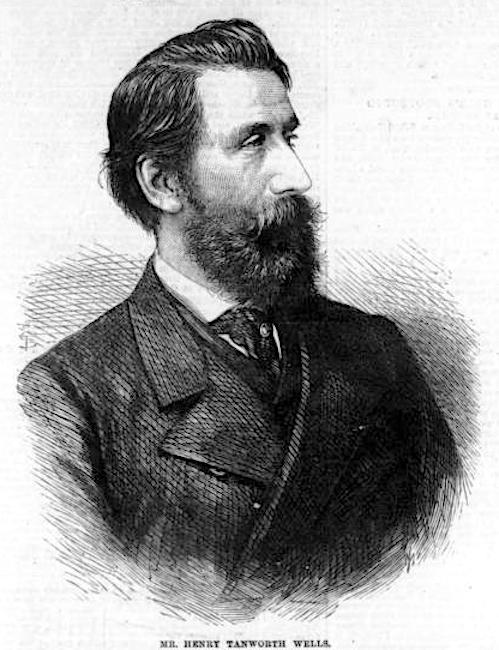Transcribed and formatted for our website by Jacqueline Banerjee, with some extra paragraphing for ease of reading.

We have engraved portraits of four of the new Associates of the Royal Academy. In our Number for June 9 last appeared portraits of Mr. Street, the architect, and Mr. Durham, the sculptor, who were elected on the same occasion. The present portraits have been reserved in order to have an opportunity of grouping the painters together. It is right to add, however, that these artists take precedence, if we regard the results of the voting, Mr. Wells having been returned, from among an unusually long list of nominees, "at the head of the poll."
MR. HENRY TANWORTH WELLS.
Mr. Wells was born in London, December, 1828, His first practice in art was as a miniature-painter. When only sixteen years of age he exhibited at the Royal Academy a portrait of Master Arthur Prinsep, a brother of Mr. V. Prinsep, the painter. At this date (1845), and for some years later, Sir William Ross and Mr. Thorburn were painting their best works, and nowhere in the Academy Exhibition was the crowd so dense as before the exquisite little portraits in the famous "miniature room" of former days. Steadily, if at first slowly, the young artist advanced in this difficult branch of art. Before many years he was a worthy competitor for public favour with Ross and Thorburn; and ultimately, after the death of the former, and the retirement of the latter from this particular field, Mr. Wells became indisputably the first miniature painter of the day.
From the year in which he first exhibited till the present time he has never ceased to be represented as a "miniaturist" on the walls of the Academy; and down to 1860 he usually exhibited eight works annually — the largest number allowed. Of this long series we have only space to mention a portrait of Princess Mary of Cambridge, painted for her Majesty in 1853; a charmimgly unconventional group (of the largest size for a miniature on ivory) of the painter himself in tourist costume, his wife mounted on an ass, and a peasant boy-guide on the ground above Amalfi, exhibited in 1860, together with full-lengths of the present Duchess of Sutherland (the background a mass of rhododendron blossoms); Frances, Countess of Waldegrave, and Mrs. Popham.
Although since the last-mentioned date the artist has devoted his best energies to oil-painting, he has, we understand, made it a point of professional honour to send one miniature every year to Trafalgar-square. Lovers of miniature-painting, now (but, we trust, only temporarily) supplanted by its unworthy rival, coloured photography, will commend and esteem the painter for this evidence of his attachment to the beautiful art in which he made his first reputation — an art, moreever, eminently English, for it was that in which, during a hundred years, our painters excelled when they obtained little distinction in any other.
In the Academy Exhibition of 1861 Mr Wells made his first apearance as an oil painter; his contribution being a portrait ot Lord Ranelagh, as Colonel of the South Middlesex Volunteer Corps, sitting, cigar in hand, astride a military chest. Next year his principal work was a group, including the painter, his wife, and one or two friends at an unostentatious dinner-table, the fruit and glass of the dessert still upon the white cloth. Mrs. Wells (née Joanna Boyce), herein represented reading aloud, whose death had occurred the year previous, was herself a most accomplished artist; and, although it is alike beyond our province to attempt to estimate the influence even on the husband's art-life of his being deprived of such congenial companionship, it will not be out of place to deplore, as we did at the time, the loss to English art of one of the most gifted of our female painters.
Since 1862 Mr. Wells has continued to exhibit. A prominent place in the East Room at the Academy was awarded to his Tableau Vivant of last year — a portrait of three sisters; and he also contributed a landscape entitled Outskirt of a Farmyard — Twilight. The large volunteer group and other portraits in the present exhibition have been too recently reviewed to require comment. Mr. Wells is the first portrait-painter elected to the associateship since his change of practice, and he affords one of the very few instances of a miniaturist attaining equal, and even greater, success in the very different medium of oil. We should add that Mr. Wells's commendable diversity of practice has also been shown in landscape painting and chalk drawing, as well as in miniature and oil portraiture.
Bibliography
"Mr Henry Tanworth Wells." Illustrated London News Vol. 48 (30 June 1866): 637-38. Internet Archive. Web. 11 July 2024.
Created 11 July 2024